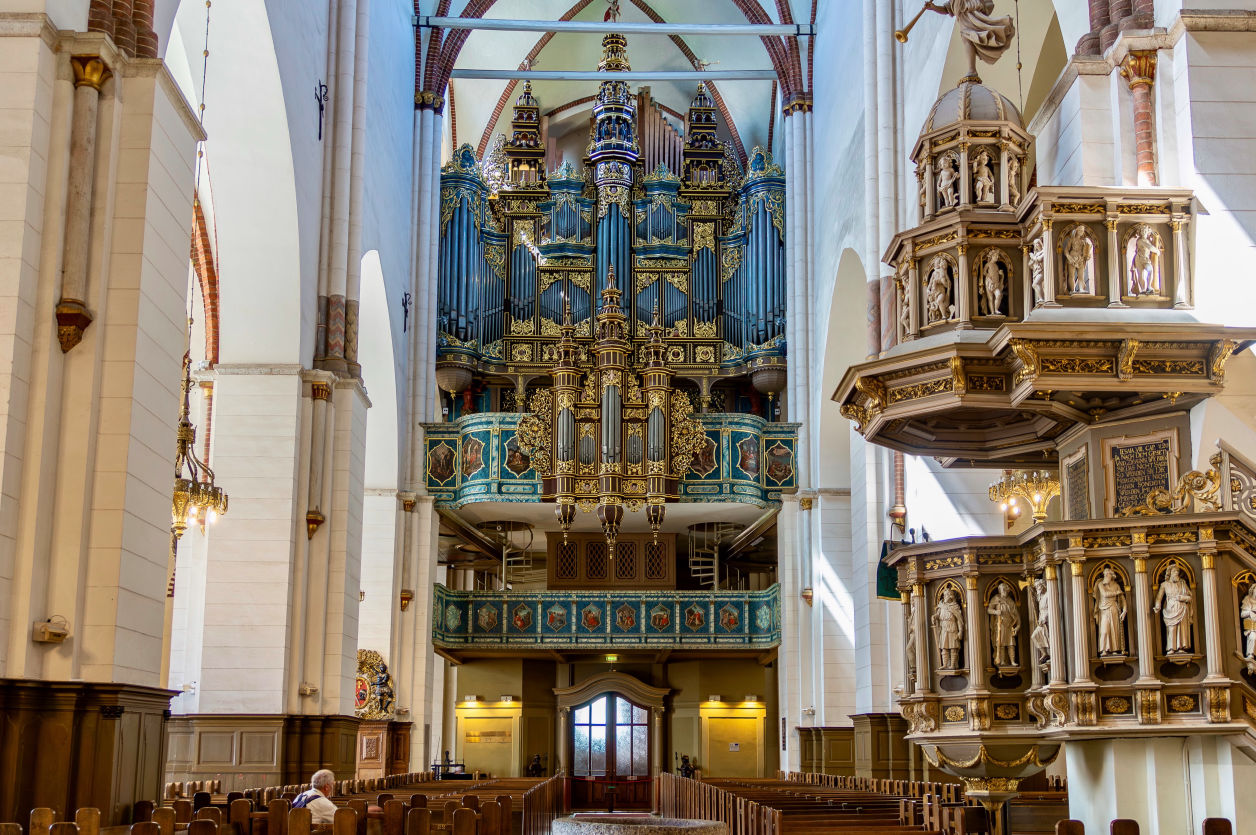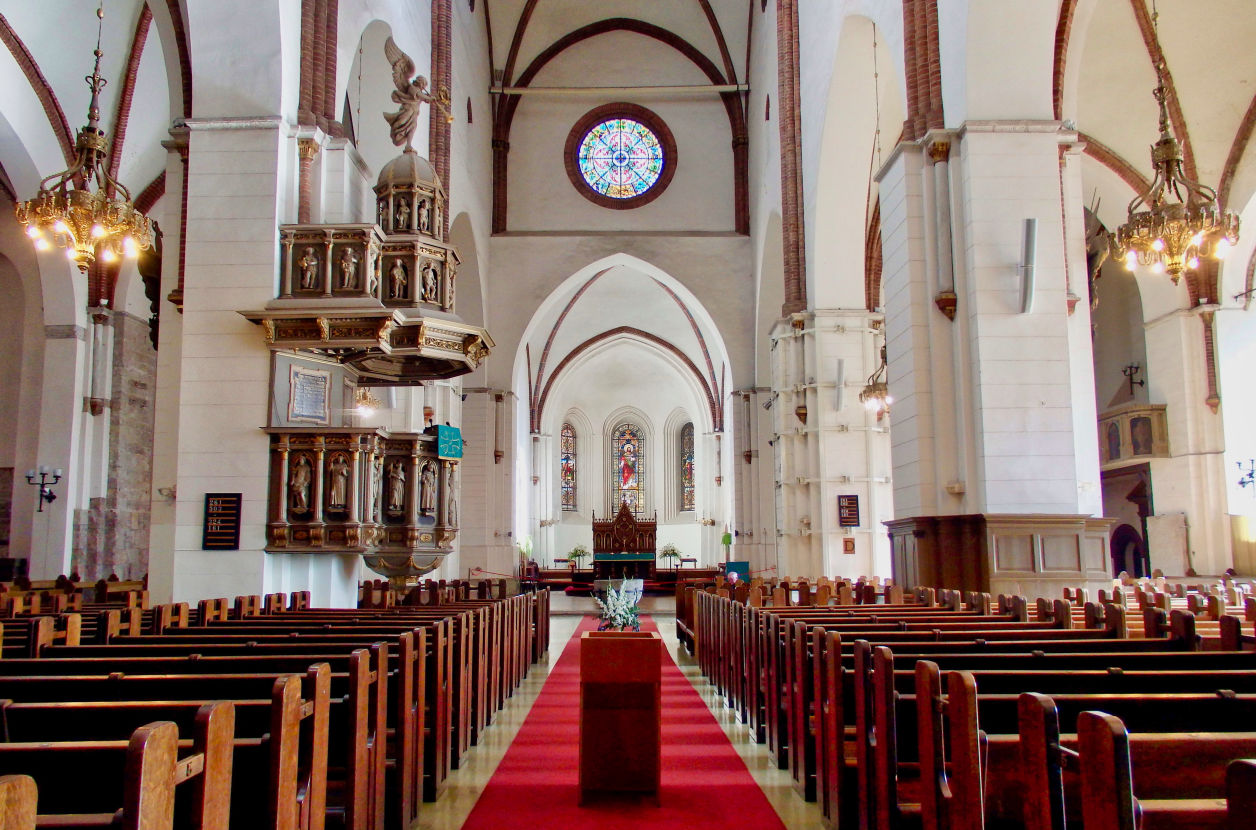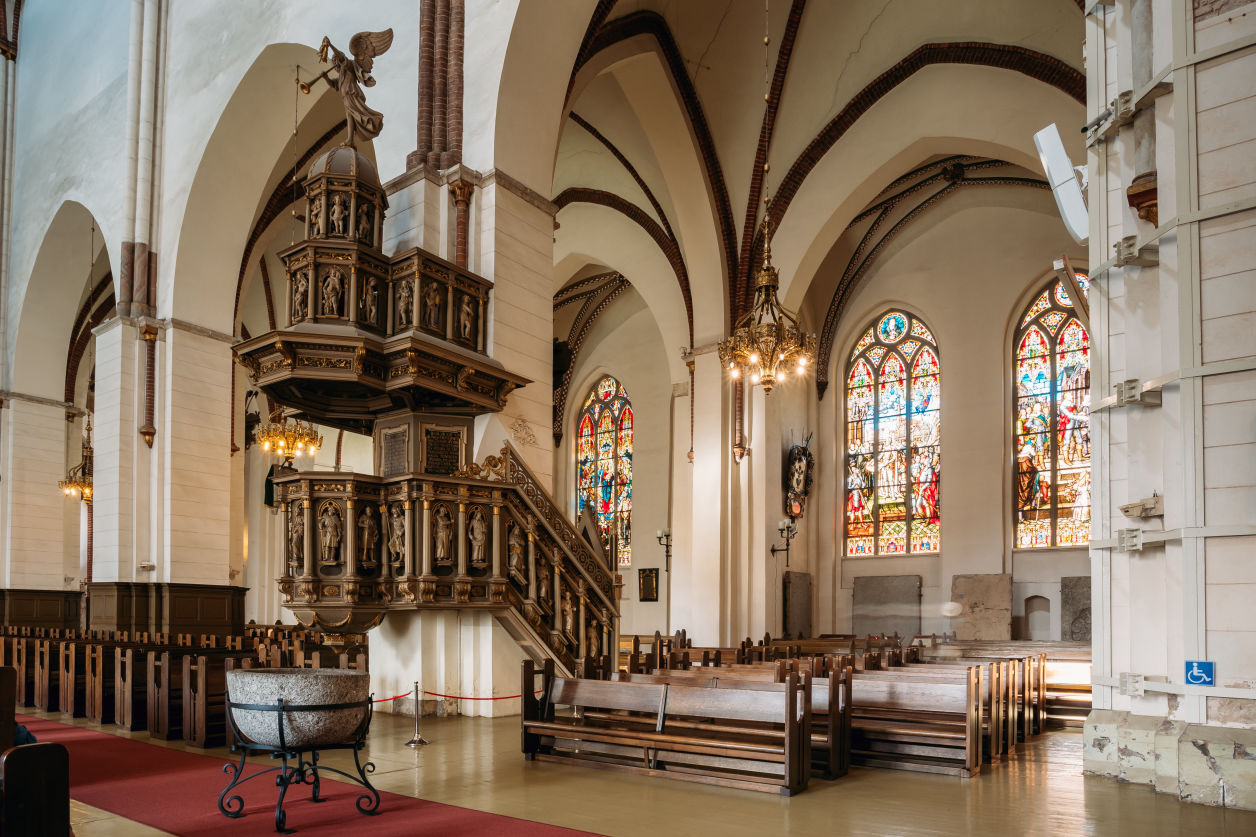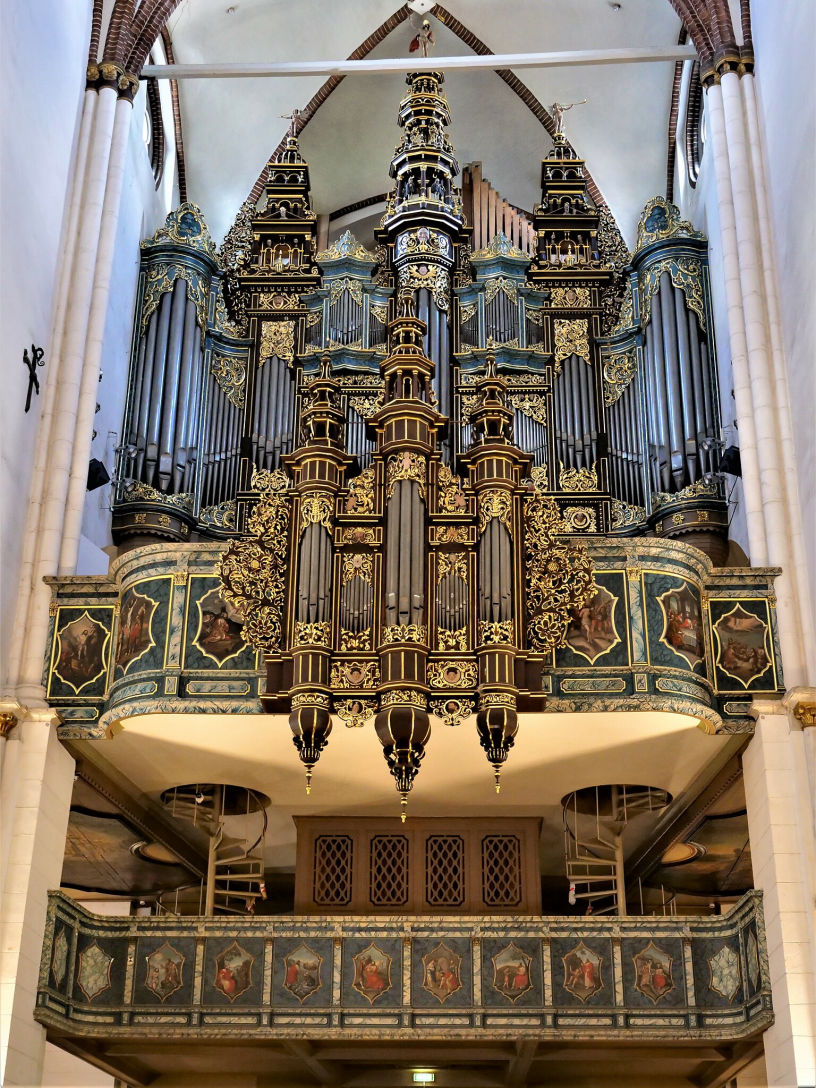Die Walcker-Orgel im Dom
In 1882/1883, the organ-building workshop Walcker from Ludwigsburg built the current organ with mechanical key action, 6,718 pipes and 116 registers on four manuals and pedal (op. 413).
It was inaugurated on January 31, 1884 and was the largest in the world at the time. The magnificent early Baroque façade of the previous instrument was retained, with the central section, crowned by three turrets, and the back positive, having been completed by Jakob Raab of Lübeck in 1601.
In 1733, Andreas Contius added two pedal towers on the left and right, which he connected to the Raab organ case via concave pipe fields. This makes the instrument the oldest preserved organ case in the Baltic States. In 1829, 52 stops were installed behind it.
In 1962, Hermann Eule Orgelbau Bautzen thoroughly overhauled the organ and replaced pipes lost during the Second World War. For its 100th anniversary, the Walcker organ was restored by the Dutch organ-building company Flentrop in 1983/1984.





